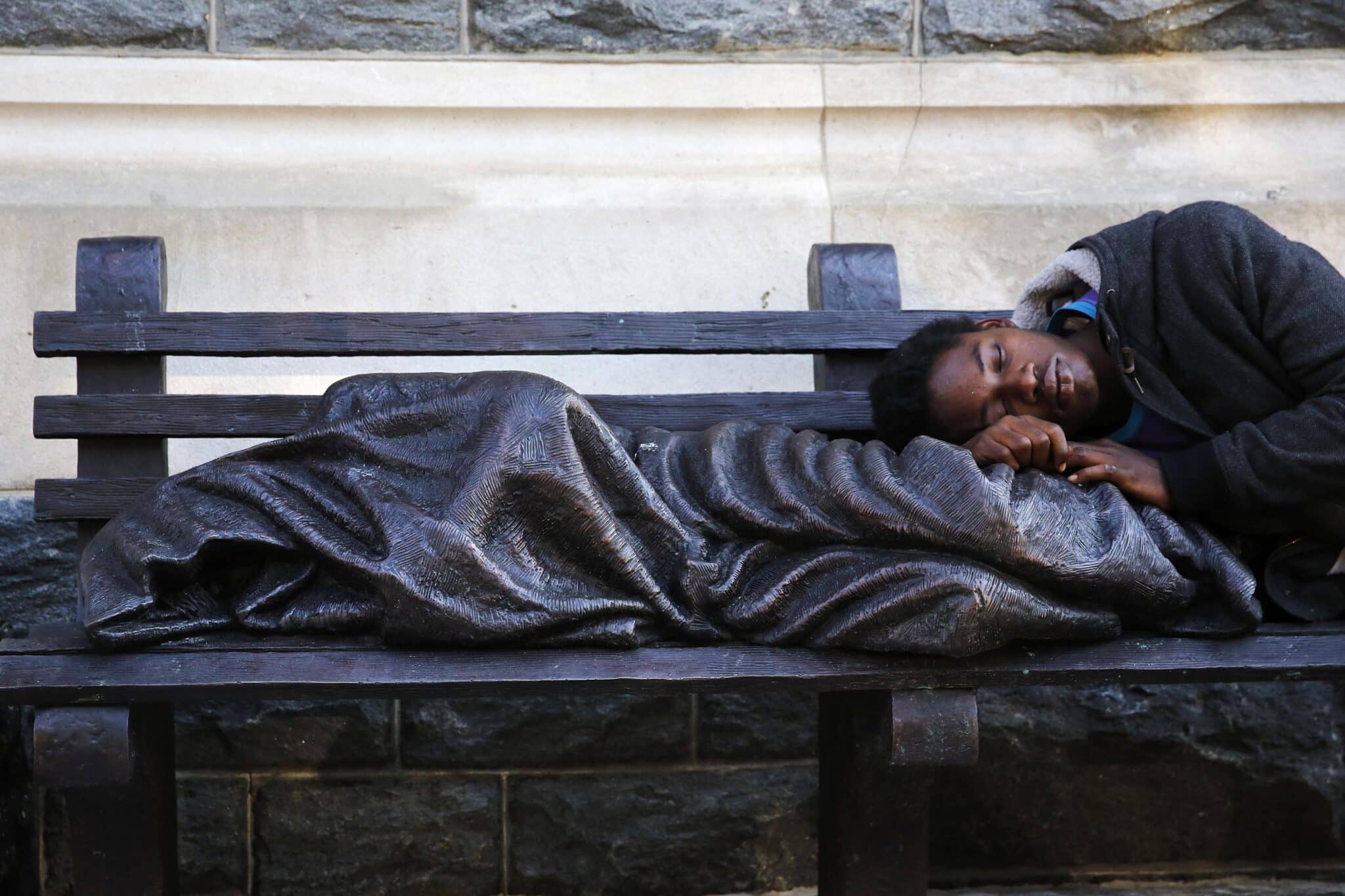This sculpture presents Our Lord in the distressing disguise of the poor.
When Canadian sculptor Timothy P. Schmalz saw a homeless man wrapped in a blanket and sleeping on a street in downtown Toronto, Ontario, he thought of Matthew 25:37: “Lord, when did we see you hungry and feed you, or thirsty and give you drink?”
“The city was his bedroom at two in the afternoon. It stopped me spiritually,” Schmalz recalls. “When I first saw the figure, I just saw Jesus.”
The Catholic sculptor was so moved by the experience that he created Jesus the Homeless, a life-sized bronze sculpture featuring Jesus wrapped in a cloak, lying on a bench. Only the feet, which bear the wounds of his crucifixion, are exposed. There is also some space on the bench for someone to sit next to the figure and rest or meditate.
Statue Strikes a Chord
That was three years ago. The first statue was installed at Regis College in Toronto, and others have since been installed around North America. An Episcopalian donor recently offered to finance the sculpture’s installation in the 12 biggest cities outside of North America.
This past spring, the sculpture was installed in front of the headquarters of Catholic Charities of the Archdiocese of Chicago. Several times a week, people line up by the sculpture to gain entry to the agency’s free evening suppers. Since those who attend Catholic Charities’ dinners are in some state of need, some of them homeless themselves, it’s a fitting place for the sculpture, Schmalz says.
“When the Son of Man looks a lot like themselves, they themselves will understand they have a sacred worth just like anybody else,” he adds.
Msgr. Michael Boland, president and CEO of Catholic Charities, calls the sculpture “thought-provoking. At first, you may think it is an actual person on a bench and as you get closer you realize, by the nail holes in the feet, that it is Jesus. It can be an uncomfortable realization,” he says. “It’s a reminder that those whom we often view as on the margins of society are among us, and deserve our care and help—just as Jesus cared for the least among us.”
A Fan in Pope Francis
Schmalz presented the sculpture to Pope Francis, who in turn stopped and prayed before it, prior to blessing it. People in Rome were so moved by the statue that they want to install a copy of it in an open piazza near the Castle Sant’Angelo, just a two-minute walk from St. Peter’s Basilica. Schmalz says it’s a symbolic spot because many homeless people live in that area, and a homeless woman who was well-known in the community died in that piazza not too long ago.
Schmalz likes that his sculpture is thought-provoking and edgy. Christianity has a lot more challenges now than faith did 100 years ago, he says, so the visual ambassadors of our faith have to be just as powerful as the Gospel.
“It’s no cookie-and-cream religion,” Schmalz says. “It’s a serious religion. It’s just as bold and only as bold as Jesus was himself when he was asked, ‘When did we help you?’”

